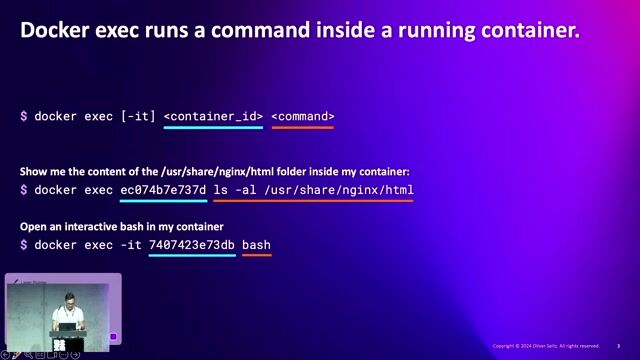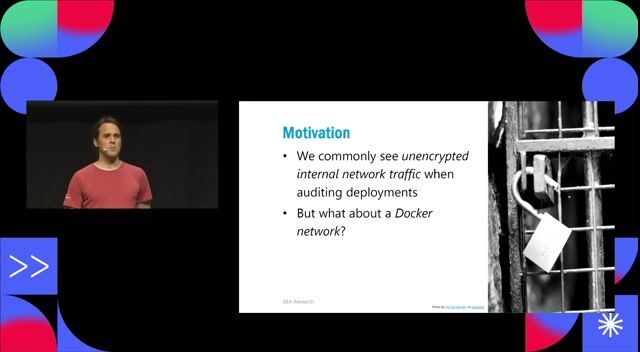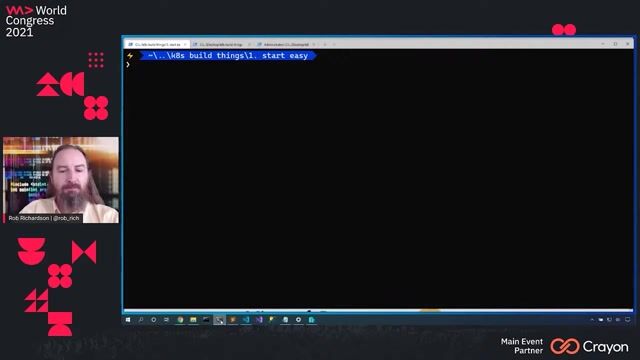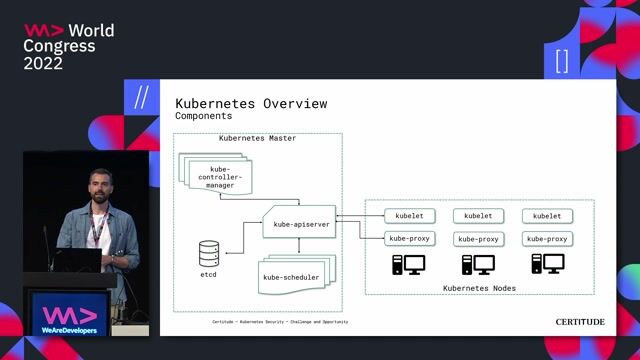Oliver Seitz
Docker network without Docker
#1about 2 minutes
Understanding container isolation with namespaces and cgroups
Containers use Linux namespaces for process isolation and cgroups for resource limiting, which necessitates explicit networking configurations for communication.
#2about 5 minutes
Establishing host-to-container communication with virtual ethernet pairs
A virtual ethernet (veth) pair acts as a point-to-point virtual cable, connecting a container's isolated network namespace directly to the host system.
#3about 5 minutes
Using virtual bridges for multi-container communication
A virtual network bridge functions like a physical switch, allowing multiple containers to communicate with each other through a single shared interface.
#4about 11 minutes
Analyzing Docker's IPtables rules for network isolation
Docker automatically creates IPtables rules in chains like DOCKER-ISOLATION-STAGE-1 to prevent unwanted traffic between different custom networks by default.
#5about 5 minutes
Manually configuring port forwarding for a running container
Port forwarding is achieved by adding a Destination NAT (DNAT) rule to the IPtables nat table, which can be added or modified for an already running container.
Related jobs
Jobs that call for the skills explored in this talk.
Featured Partners
Related Videos
 29:16
29:16Docker exec without Docker
Oliver Seitz
 50:09
50:09Compose the Future: Building Agentic Applications, Made Simple with Docker
Mark Cavage, Tushar Jain, Jim Clark & Yunong Xiao
 28:47
28:47Turning Container security up to 11 with Capabilities
Mathias Tausig
 28:30
28:30All things Docker Compose!
Michael Irwin
 29:19
29:19Bootable AI Containers with Podman Desktop
Kevin Dubois & Cedric Clyburn
 27:55
27:55This Is Not Your Father's .NET
Don Schenck
 40:00
40:00Local Development Techniques with Kubernetes
Rob Richardson
 42:45
42:45Kubernetes Security - Challenge and Opportunity
Marc Nimmerrichter
From learning to earning
Jobs that call for the skills explored in this talk.


DevOps Engineer – Kubernetes & Cloud (m/w/d)
epostbox epb GmbH
Berlin, Germany
Intermediate
Senior
DevOps
Kubernetes
Cloud (AWS/Google/Azure)


Golang System Software Engineer - Containers / Virtualisation
Canonical Ltd.
Municipality of Valencia, Spain
Remote
Go
API
C++
Ceph
+6
Containerization & Virtualisation Engineer
Canonical Ltd.
Municipality of Valencia, Spain
Go
C++
Ceph
Rust
REST
+6
Ansible Docker Editeur Google Cloud KUBERNETES TERRAFORM
Silkhom
Bron, France
Remote
€50-65K
Senior
Bash
Azure
DevOps
+10
Software Architect - Containers / Virtualisation
Canonical Ltd.
Municipality of León, Spain
Remote
Go
Ceph
Linux
Software Architect - Containers / Virtualisation
Canonical Ltd.
Municipality of Madrid, Spain
Remote
Go
Ceph
REST
Linux
+1
Software-Defined Networking Engineer
Canonical Ltd.
Municipality of Murcia, Spain
Remote
Go
C++
Rust
Linux
+3


